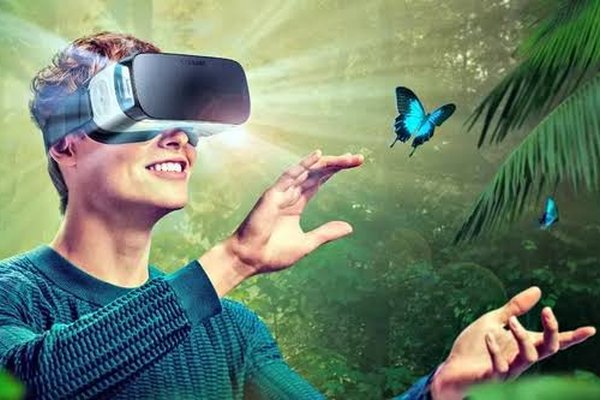Published on the 27/11/2019 | Written by Jonathan Cotton

You’ve heard it before, now hear it again: VR and AR are going to revolutionise everything. But when?…
Another day, another paper heralding the transformational potentialities of virtual reality (VR) and augmented reality (AR). This time it’s PwC, issuing a new report that says the burgeoning VR/AR deluge is going to ‘revolutionise’ business.
That’s likely right of course. The use cases are a’plenty, and with the release of Microsoft’s Hololens 2, it makes sense we’re talking about it again.
So could a real McCoy enterprise business case be on the horizon? PwC’s Seeing Is Believing report, tries hard to make the case.
The report is designed to explore the impact that VR and AR will have, and more specifically, ‘how these technologies can help organisations transform the way they work, engage and inform customers and colleagues, and grow their revenues’.
Actual ROI is still rare.
It’s a job worth doing say PwC’s economists: They argue that VR and AR ‘have the potential to boost GDP globally by 2030 by up to $1.5 trillion’.
While 2030 is seems like a long way away, that’s also a big number from where we stand today: “From creating new customer experiences to speeding up product development and improving workplace safety, there are many compelling uses for these technologies that promise to drive growth from the current GDP contribution of $46.4 billion.”
There’s another big number on offer too: By 2030 the number of jobs ‘enhanced’ by VR and AR will have swelled from 824,634 this year, to a whopping 23,360,639.
So where is all this growth – by way of created value and reduced costs – going to come from? PwC offers five areas to keep your eye on.
Product and service development
“Almost every industry is responding to a growing need to deliver greater innovation, faster and more effectively, at better prices,” says Darren Jukes, head of industrial manufacturing, PwC UK.
VR and AR, says Jukes, ‘can transform the way businesses develop products’.
“Rapid prototyping and collaboration using VR and AR technology will speed up and enrich the creative process.
“The time-intensive requirement to build physical prototypes can be reduced dramatically, bringing ideas and innovations to life and products to market far more quickly.”
Healthcare
Healthcare is one of the industries where the business case for virtual and augmented technologies is clear.
“VR is already being used to give medical students greater access to operating theatres, where there are restrictions on the number of observers,” says PwC. “The technology is also being used to enable consultants based in different locations to collaborate remotely and discuss upcoming surgical procedures”.
PwC predicts that healthcare VR and AR has the potential to add $350.9b to the global economy in the next decade, most likely via front-line patient care and training.
Training
Healthcare isn’t the only industry that will benefit from adjusted reality training tech. “The technology provides a way to train employees where it is not always practical – or safe – to do so in the real world. For example, to simulate emergency situations or asset maintenance in dangerous environments.”
The tech also has the potential to improve efficiency, accuracy and productivity in a variety of areas, suggests PwC. One example: Using an AR interface, repair diagrams can be fed to teams of engineers and technicians, helping them identify problems and conduct repairs and maintenance more quickly.
“In the logistics sector, smart glasses can display picking information for the worker, highlighting location and displaying product details and packing instructions.”
Retail and consumer
VR and AR’s ability to entertain is perhaps better understood than anything else. The potential for film and gaming is clearly substantial, and that will likely spill over into the retail environment says PwC.
“VR and AR offer retailers the opportunity to create exciting new customer experiences, from virtual fitting rooms for fashion stores, to AR applications that let people test how furniture would look in their home before they buy,” says the report.
“Retailers are also using VR and AR for consumer research, generating new insights into shopper behaviours and reactions to product placements, aisle configurations and branding changes.”
So where does that leave us? Simply put, the potential is big, but by and large, it’s still just potential. But that shouldn’t dampen our enthusiasm, says PwC.
“Don’t let past experiences and outdated perceptions of these technologies shape your thinking,” warns Louise Liu, head of operations and delivery VR/AR at PwC UK.
That seems like good advice. The tech is surging ahead after all and we simply don’t know exactly how it’s going to develop. But it does seem to acknowledge that we’ve heard a lot about what’s possible with augmented realities, and actual ROI is still rare.
In that respect, it’s business as usual.
If nothing else, PwC’s report certainly makes a strong case for VR and AR’s communications potential though. The document has its own VR/AR element, with three QR codes throughout the report. Scan them with your phone then point your camera at the corresponding image and stuff happens.
It’s pretty cool, buy maybe that makes a good point too: At this moment in time, VR technology is still more about style than substance.



























